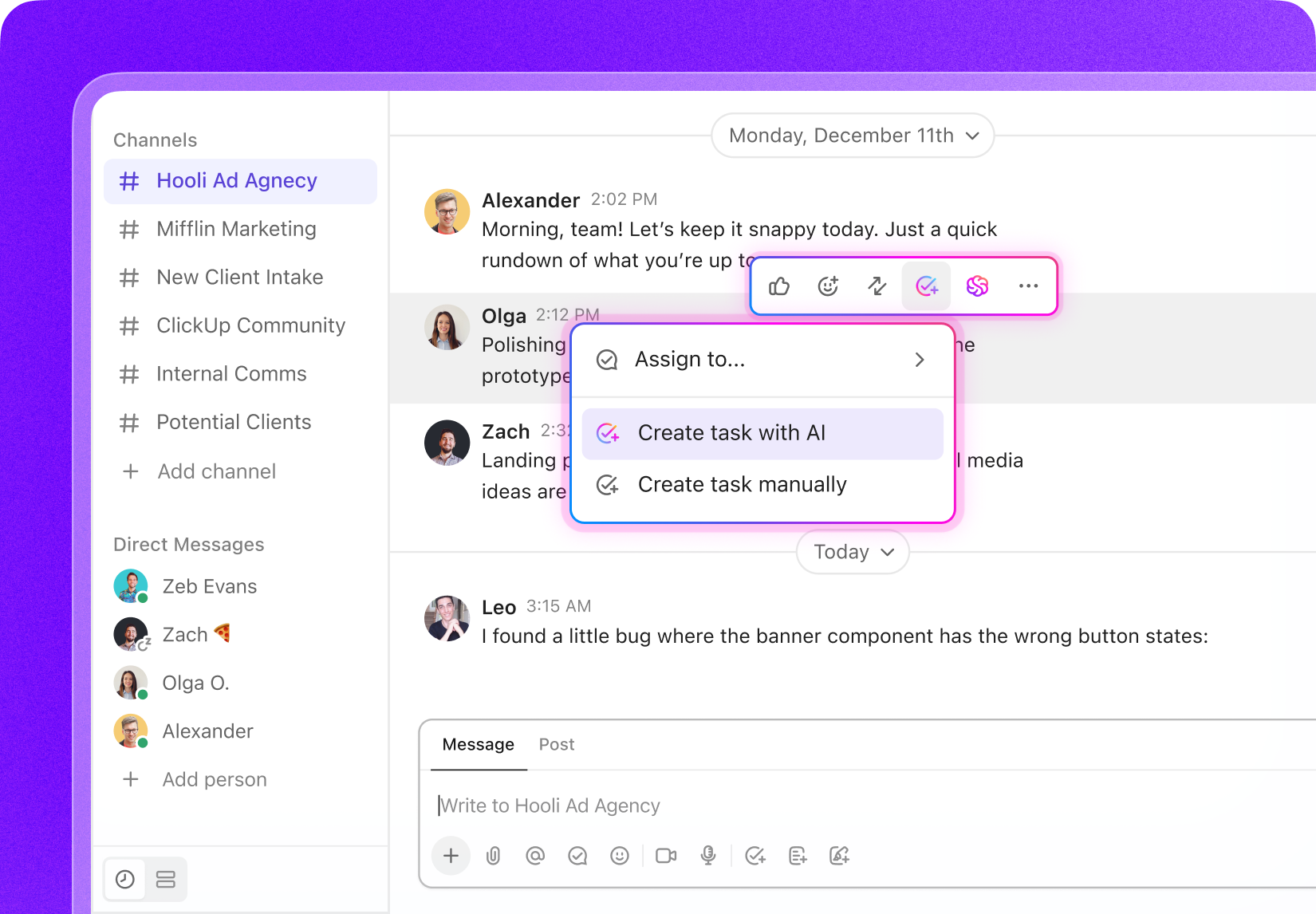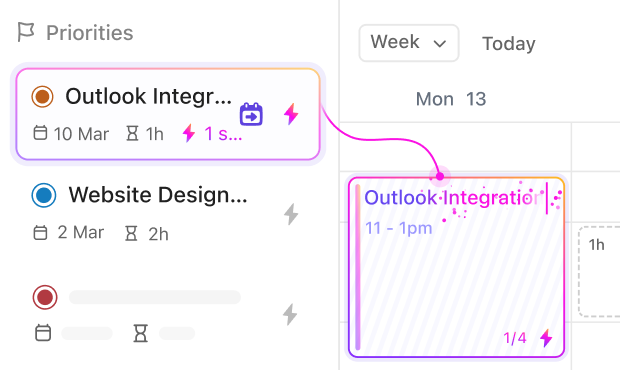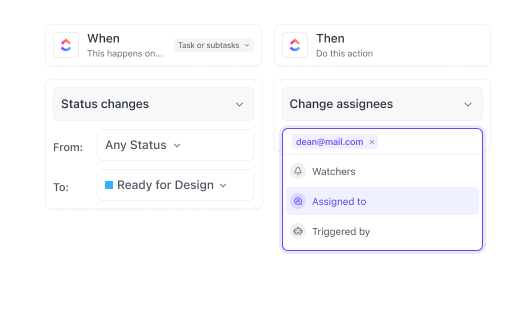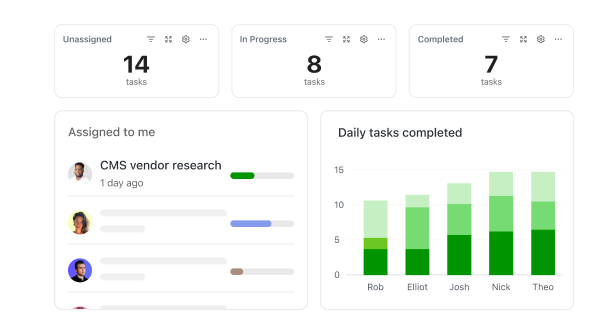Task Management for Inventory Pros
Task Management Software Designed for Inventory Managers
Keep your stock organized, monitor supply chain milestones, collaborate effortlessly with your team, and gain full visibility into every step of your inventory process.
Trusted by the world’s leading businesses
Why Organize Tasks
Why Inventory Managers Rely on Task Management Software
Handling inventory without a structured system leads to errors, misplaced stock data, and operational bottlenecks — turning routine duties into major headaches.
- Stock levels become unpredictable — causing overstocking or shortages that disrupt sales.
- Order tracking becomes confusing — orders get lost or delayed without clear visibility.
- Manual counts cause inaccuracies — spreadsheets and paper logs lead to mistakes and wasted time.
- Supplier communications falter — unclear responsibilities and missed follow-ups slow procurement.
- Deadlines for shipments and restocks slip — risking customer dissatisfaction and lost revenue.
- Inventory reporting feels opaque — lacking timely insights hampers decision-making.
- Team coordination breaks down — scattered messages and inconsistent updates cause misalignment.
- Resource allocation is inefficient — labor and storage space aren’t optimized, driving up costs.
Conventional Methods vs ClickUp
Where Traditional Inventory Tools Fall Short
Discover how ClickUp delivers clarity and control that legacy systems can't match.
Conventional Tools
- Inventory data spread across spreadsheets, emails, and manual logs
- Order and delivery tracking prone to errors
- Stock counts done manually with delays
- Supplier follow-ups handled inconsistently
- Shipment deadlines often overlooked
- Reports compiled from disconnected sources
ClickUp Tasks
- Centralized task management with real-time updates and priorities
- Automated order and shipment tracking with alerts
- Barcode and stock count templates for accuracy
- Clear supplier assignments and communication threads
- Integrated calendars and reminders for every deadline
- Comprehensive, searchable reports linked to tasks
Use Cases
How Task Management Software Empowers Inventory Managers
See how focused task tracking eliminates confusion and streamlines your inventory operations.
Unifying Inventory Data Across Locations and Teams
ClickUp centralizes stock counts, supplier info, and order status, ensuring everyone accesses up-to-date details from one place.
Maintaining a Clear Audit Trail for Stock Movements
Track every item’s journey with timestamps, comments, and attached documents to ensure accountability and compliance.
Capturing Supplier Feedback and Order Updates Efficiently
Keep supplier communications organized with task comments and mentions, avoiding missed or duplicated messages.
Preventing Stock Discrepancies with Standardized Procedures
Use templates and checklists to standardize receiving, counting, and restocking processes, reducing errors and delays.
Tracking Compliance with Inventory Regulations and Audits
Manage audit checklists, deadlines, and documentation with custom fields and reminders, ensuring nothing is overlooked.
Optimizing Supply Chain Workflows and Lead Times
Visualize dependencies and timelines to synchronize procurement, storage, and distribution effectively.
Avoiding Missed Reorder Points and Shipment Delays
Automated alerts and Gantt charts help you stay ahead of restocking needs and delivery schedules.
Reducing Manual Data Entry and Duplicate Records
Attach receipts, invoices, and reports directly to tasks to minimize errors and streamline documentation.
Turning Team Meetings Into Clear, Actionable Plans
Convert discussions into assignable tasks with deadlines to keep your inventory team aligned and productive.
Elevate Your Inventory Workflow
From stock tracking to supplier coordination, keep every detail under control.






Key Beneficiaries
Who Benefits Most from ClickUp's Inventory Task Management
For inventory managers seeking a unified platform to streamline stock control and team collaboration.
Warehouse Supervisors
Track stock movements, manage receiving and shipping tasks, and ensure accurate inventory levels without juggling multiple tools.

Procurement Specialists
Coordinate supplier orders, monitor delivery timelines, and maintain clear communication with vendors through centralized task assignments.

Inventory Analysts
Analyze stock trends, forecast demand, and generate reports with integrated data to support informed decision-making.

How ClickUp Supports Inventory Managers
Step-by-Step Inventory Management with ClickUp
Manage stock, orders, and supplier relations all in one place.
Centralize Inventory Data
Keep all stock information, purchase orders, and supplier contacts organized in a single workspace — no more scattered files.
Plan and Track Orders
Break down procurement cycles into clear phases with task lists, timelines, and dependencies.
Standardize Receiving and Counting
Use templates and checklists to ensure consistent and accurate inventory updates.
Collaborate with Suppliers and Teams
Assign tasks, share updates, and communicate directly within ClickUp to keep everyone aligned.
Convert Meetings Into Action Items
Turn team discussions and supplier calls into actionable tasks with owners and deadlines.
Monitor Deadlines and Stock Levels
Set automated reminders and visualize timelines to prevent stockouts and delays.
Ready to Streamline Your Inventory Management?
Cut errors, boost accuracy, and focus on growing your business.





